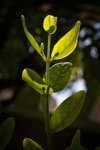Notice (8): Undefined index: geoplugin_countryCode [APP/Controller/AppController.php, line 94]Code Context$Country_code = '';if($ip_data && $ip_data['geoplugin_countryCode'] != null) {$Country_code = $ip_data['geoplugin_countryCode'];$client = null $forward = null $remote = '216.73.216.187' $ip = '216.73.216.187' $ch = unknown $ip_data_in = '{ "geoplugin_status":403, "geoplugin_message": "geoPlugin API is no longer available for free use. To continue access, please upgrade to a paid plan", "geoplugin_url": "https://www.geoplugin.com/subscription" } ' $ip_data = [ 'geoplugin_status' => '403', 'geoplugin_message' => 'geoPlugin API is no longer available for free use. To continue access, please upgrade to a paid plan', 'geoplugin_url' => 'https://www.geoplugin.com/subscription' ] $Country_code = ''App\Controller\AppController::initialize() - APP/Controller/AppController.php, line 94 App\Controller\ProductsController::initialize() - APP/Controller/ProductsController.php, line 31 Cake\Controller\Controller::__construct() - CORE/src/Controller/Controller.php, line 273 ReflectionClass::newInstance() - [internal], line ?? Cake\Http\ControllerFactory::create() - CORE/src/Http/ControllerFactory.php, line 47 Cake\Http\ActionDispatcher::dispatch() - CORE/src/Http/ActionDispatcher.php, line 91 Cake\Http\BaseApplication::__invoke() - CORE/src/Http/BaseApplication.php, line 235 Cake\Http\Runner::__invoke() - CORE/src/Http/Runner.php, line 65 Cake\Http\Runner::__invoke() - CORE/src/Http/Runner.php, line 65 Cake\Http\Middleware\CsrfProtectionMiddleware::__invoke() - CORE/src/Http/Middleware/CsrfProtectionMiddleware.php, line 104 Cake\Http\Runner::__invoke() - CORE/src/Http/Runner.php, line 65 Cake\Http\Runner::run() - CORE/src/Http/Runner.php, line 51 Cake\Routing\Middleware\RoutingMiddleware::__invoke() - CORE/src/Routing/Middleware/RoutingMiddleware.php, line 168 Cake\Http\Runner::__invoke() - CORE/src/Http/Runner.php, line 65 Cake\Routing\Middleware\AssetMiddleware::__invoke() - CORE/src/Routing/Middleware/AssetMiddleware.php, line 88 Cake\Http\Runner::__invoke() - CORE/src/Http/Runner.php, line 65 Cake\Error\Middleware\ErrorHandlerMiddleware::__invoke() - CORE/src/Error/Middleware/ErrorHandlerMiddleware.php, line 96
| Scientific: | Phyllanthus niruri |
|---|---|
| Other: | Chanca Piedra |
| Family: | Phyllanthaceae |
Chanca piedra is a small, erect, annual herb that grows 30-40 cm in height. It is indigenous to the rainforests of the Amazon and other tropical areas throughout the world, including the Bahamas southern India, and China. P. niruri is quite prevalent in the Amazon and other wet rainforests, growing and spreading freely (much like a weed). P. amarus and P. sellowianus are closely related to P. niruri in appearance, phytochemical structure, and history of use, but typically are found in the drier tropical climates of India, Brazil, and even Florida and Texas.
The Phyllanthus genus contains over 600 species of shrubs, trees, and annual or biennial herbs distributed throughout the tropical and subtropical regions of both hemispheres. Unfortunately, there remains a great deal of confusion among scientists regarding plant identification and, in many cases, plant misidentification makes evaluation of published information difficult. P. amarus (Thonn. & Schum) and P. sellowianus are often considered a variety of P. niruri, or no distinction is made among these three species in published clinical research. Oftentimes one name is indicated to be synonymous with another and, sometimes, both names are used interchangeably as if referring to one plant. It became so confusing that, in the 1990s, a major reorganization of the Phyllanthus genus was conducted (which classified P. amarus as a type of P. niruri).
The Spanish name of the plant, chanca piedra, means " stone breaker " or " shatter stone. " It was named for its effective use to generations of Amazonian indigenous peoples in eliminating gallstones and kidney stones. In Brazil, the plant is known as quebra-pedra or arranca-pedras (which also translates to " break-stone " ). In addition to kidney stones, the plant is employed in the Amazon for numerous other conditions by the indigenous peoples, including colic, diabetes, malaria, dysentery, fever, flu, tumors, jaundice, vaginitis, gonorrhea, and dyspepsia. Based on its long documented history of use in the region, the plant is generally employed to reduce pain, expel intestinal gas, to stimulate and promote digestion, to expel worms, as a mild laxative.
Chanca piedra has a long history in herbal medicine systems in every tropical country where it grows. For the most part, it is employed for similar conditions worldwide. Its main uses are for many types of biliary and urinary conditions including kidney and gallbladder stones; for hepatitis, colds, flu, tuberculosis, and other viral infections; liver diseases and disorders including anemia, jaundice and liver cancer; and for bacterial infections such as cystitis, prostatitis, venereal diseases and urinary tract infections. It is also widely employed for diabetes and hypertension as well as for its diuretic, pain-relieving, digestive stimulant, antispasmodic, fever reducing, and cellular protective properties in many other conditions.
Urinary
• kidney stones nephrolithiasis - primary use
Hepatobiliary
• biliary insufficiency
- cholelithiasis (gallstones) - primary use
• Viral hepatitis
Cardiovascular
• gout
• cholesterol
• Antilithic
• Antiviral
• Diuretic
• Antispasmodic
• Isoquinoline Alkaloids (E.g. Boldine)
• Essential Oils (E.g. Ascaridole, Terpin-4-Ol )
• Tincture (1:5 in 60% EtOH): 1-2 ml tid
• Infusion (herb): 1 tsp tid
Contraindications:
Caution:
Toxicity:
Long-term use:
Liver toxicity: C
Drug-induced hepatitis:
Barnes J, Anderson LA, Phillipson JD. Herbal Medicines, 3rd ed. London: Pharmaceutical Press, 2007.
Bone K. Principles and Practice of Phytotherapy. Edinburgh: Churchill Livingstone, 2000.
Bone K. A Clinical Guide to Blending Liquid Herbs: Herbal Formulations for the Individual Patient. St Louis, MO: Churchill Livingstone, 2003.
Brinker F. The Toxicology of Botanical Medicines, 3rd ed. Sandy, Oregon: Eclectic Medical Publications, 2000.
Felter HW, Lloyd JU. King's American Dispensatory. 1898. http://www.ibiblio.org/herbmed/eclectic/kings/main.html. Accessed: August 19, 2006.
Hoffman D. Medical Herbalism. Rochester, Vermont: Healing Arts Press, 2003.
Weiss RF. Herbal Medicine. Beaconsfield, England: Beaconsfield Publishers Ltd, 1988.
Williamson EM, ed. Major Herbs of Ayurveda. Edinburgh: Churchill Livingstone, 2002
Disclaimer: This content is subject to change. The information is intended to inform and educate; it does not replace the medical evaluation, advice, diagnosis or treatment by a healthcare professional. www.nhpassist.com © 2014 NDAssist Inc. and/or its affiliates. All rights reserved.

|
Chanca Piedra
SummaryChanca piedra is a small, erect, annual herb that grows 30-40 cm in height. It is indigenous to the rainforests of the Amazon and other tropical areas throughout the world, including the Bahamas southern India, and China. P. niruri is quite prevalent in the Amazon and other wet rainforests, growing and spreading freely (much like a weed). P. amarus and P. sellowianus are closely related to P. niruri in appearance, phytochemical structure, and history of use, but typically are found in the drier tropical climates of India, Brazil, and even Florida and Texas. IndicationsSign in requiredActionsSign in requiredConstituentsSign in requiredPosologySign in requiredSafetySign in requiredReferencesSign in required |
|---|